In an apartment in Brooklyn on Friday, Jamie McCarty and Alinne Fernandes, in their late twenties and early thirties respectively, readied themselves for a trip to Washington, D.C. They had decided they had to join the hundreds of thousands of people who had committed to gather and march in Washington against recently sworn in president Trump, whose misogynist commentary and alignment with white supremacists has angered many.
This protest marks an important moment for both women, who had only participated in a few Black Lives Matter events previously. The Women’s March and president Trump’s election have forced them to consider how they’ll stay active after the march, perhaps by joining an organized cause.
“I feel like you have to,” explained Fernandes before she headed out to D.C. She says prior to this moment she hadn’t educated herself on how to get involved, but now she’s ready to make a concerted effort.
Unlike many recent movements including Occupy Wall Street and Black Lives, many of the women (and men) who attended Saturday’s march in Washington (and the over 600 sister marches in cities across the world) were not associated with one single group. Not only that, but the Women’s March marked the first protest event many had ever attended.
This march was not borne of activists. The idea started the night of the election, when a woman in Hawaii posted an event on Facebook calling for a protest in Washington, according to the Los Angeles Times. The original goal was an act of dissent against President Trump. As it gained mass interest entirely organically on Facebook professional activists got involved to organize the march. In the preceding weeks, its leadership became more diverse, including fashion designer Bob Bland, as well as professional activists Linda Sarsour, Carmen Perez, and Tamika Mallory, and the march came to encompass a diverse set of issues.
Yet, despite the lack of affiliation with one central group (or perhaps because of it), the Women’s March on Washington drew millions of women into the streets in cities across the U.S. and around the world. Starting as early as 6:00 a.m. on Saturday, women showed up in droves, blanketing the area between the Capitol Building and the Monument, many wearing pink knit cat-eared “Pussy hats,” the beanies that have come to represent the movement against Donald Trump’s brazen comments about women. But the reason women were willing to travel from all corners of the United States for a day of marching is because there are so many issues to protest.
Related: The Creators Of The Pussyhat Project Explain How Craft Projects Are Protest
“I think there are a lot of rights that have been threatened over the past year, not just one particular issue and that culmination is what drew me here today,” said Beth Yosler, one of the protesters at the march who traveled from Pennsylvania.
The question is, can a sustained movement form around such a broad set of issues?
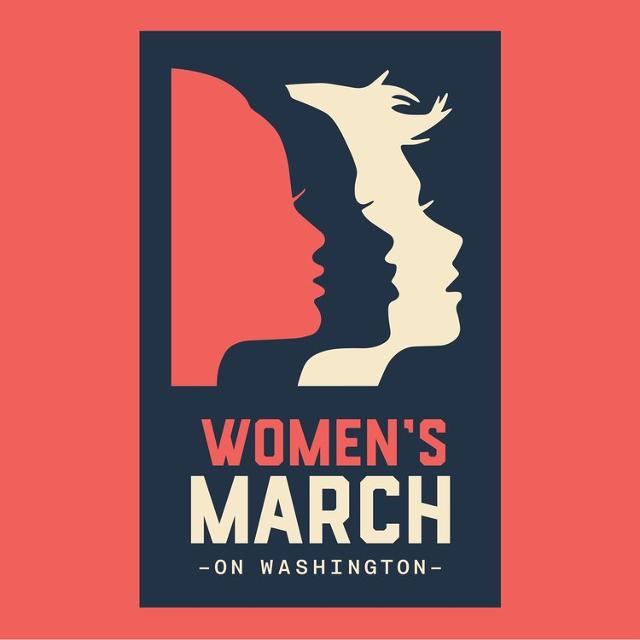
Refining The Message
After new leaders were added to the helm, the Women’s March committee revealed a set of prerogatives. The issues outlined by the march’s organizers were sweeping including equal pay for all women, access to reproductive health services, an end to police violence and racial profiling, and access to clean water and air. They also called for the support of civil rights, disability rights, and the rights of immigrants.
This wide-reaching collection of issues is perhaps part of the reason why the crowds who gathered on Saturday were so diverse: from union workers in Ohio to Unitarians from Pennsylvania and groups of women from Alaska.
But since there were so many causes represented at the march, protesters had a hard time coming up with a unifying chant during their procession. Aside from a few short calls of “This is what democracy looks like” marchers didn’t latch on to a particular phrase.
Related: America Finally Has A New “Hope” Poster
“There’s no reason to think that the Women’s March can’t be the start or the part of something larger,” says David Meyer at the University of California Berkeley. But he adds a caveat, “(They) need to prioritize issues, it doesn’t have to be hyper-specific demands, but it can’t be 200 things.”
Some of the most prominent and successful social movements have hinged on a single issue. The support for gay marriage changed attitudes and laws about gay marriage. The 1963 March on Washington yielded the Civil Rights Act. Black Lives Matter has made progress pressuring some states to pass measures requiring police to have diversity training, wear body cameras, and has pushed the conversation about police brutality into the forefront of American minds. The right too, has had success with similarly one-issue campaigns. The the pro-life movement, which seeks the repeal of the Roe v. Wade decision, has embedded itself into Republican politics.
By contrast the Women’s March has more in common with the Occupy Wall Street movement. Occupy was similarly inclusive, which made it able to garner lots of support, but can be argued that it failed to effect concrete change. Part of that was because there wasn’t a clear set of achievable agendas that could pave the way to the humane society and income equality the movement sought. Some do credit Occupy with starting a national conversation about income inequality that has sparked more focused movements like the Fight for $15 to raise the national minimum wage.
“The simpler your message is, the easier it is to be a force,” says Meyer.
Of course, having an array of issues doesn’t in and of itself fate a movement to failure. Just as the Tea Party came together in the wake of President Obama’s election around a set of shared values, so too could the Women’s March. Its support of human rights at large could be translated into tangible objectives that its large base can unite behind in order to achieve a greater vision.
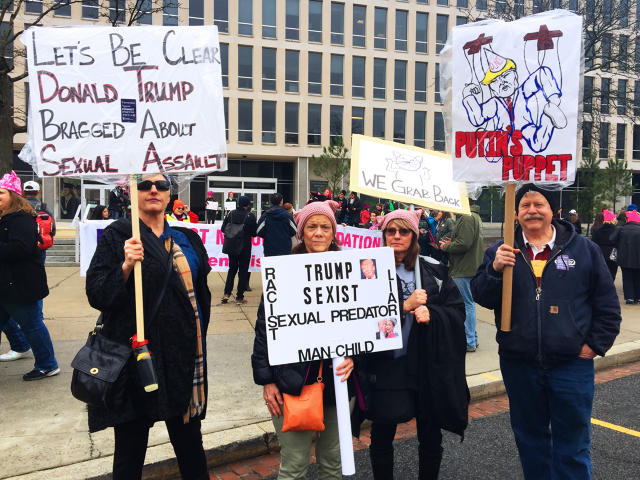
Not A Single Issue
While movements based around one criteria can be effective in getting pieces of a matter addressed, the approach may not do much for people who are facing a host of interlinked threats.
This has led activists to consider a more intersectional approach to their work. The concept of intersectionality was first introduced 25 years ago by law professor and civil rights advocate Kimberle Crenshaw, but has gained in popularity more recently. The idea is that people are burdened by a spate of issues that affect one another even if they don’t immediately seem like they do.
While attracting a large mass of people around several different issues can be complicated and it can be hard to gain consensus, intersectionality offers an opportunity to organize a large base that will show up for a variety of different events. Now is a particularly interesting moment in American social politics, because people feel that many rights are being threatened and that means they may be willing to get behind multiple activist efforts.
“The vast majority of people are just individuals out there struggling and being affected,” says Malkia Cyril, executive director of the Center for Media Justice. “Giving them an opportunity to fight back is a way to enter.”
The Women’s March could facilitate such a movement around opposition to the Trump administration who many fear might roll back the progress of the last several decades. But in order to enact meaningful change, the Women’s March will have to act as more of a network to achieve movement status. Post-march, it could be a platform for galvanizing its constituents and directing them to other opportunities for activism whether a march for Black Lives Matter or a rally for immigrant rights. So rather than being a singular event for organizations to attract new devotees, it would become a connector.
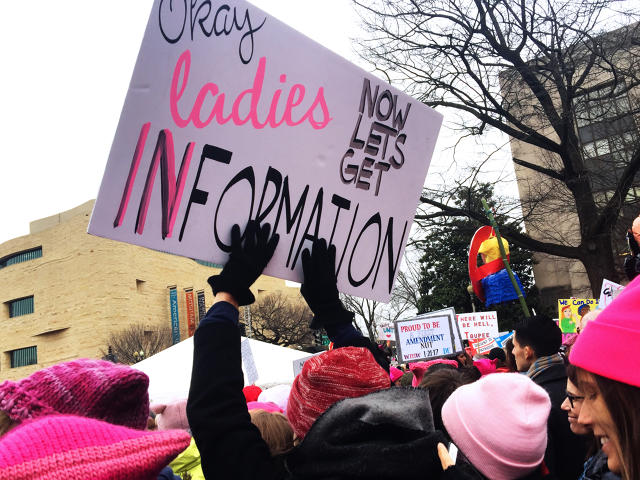
Already the organization has pledged to launch 10 actions in 100 days. The first asks all of those who align with the Women’s March to send postcards to their Congress member and ask for action on specific issue. “We will be staying connected via social media, via emails, to ask people if they want to stay engaged with us,” Vanessa Wruble, head of campaign operations for the Women’s March, told me ahead of the march. She said the week after the march she and the other organizers would meet to discuss what’s next.
Conceiving of a post-march plan won’t be easy. People are often happy to show up for an event like a march or rally. But the tedious business of writing letters, making phone calls, and facilitating other activist grunt work may be a harder sell.
Here To Stay
Around 1 p.m on Saturday, a little unrest began to develop in the crowd. Hundreds of thousands of people had been standing in the cold for hours. As speaker after speaker took the stage, a chant of “march, march, march, march” emerged from the crowd. One of the event organizers took to the stage to tell the crowd that there were only a few speakers left and performances from artists Janelle Monae and Maxwell were still to come. The people around me groaned.
The performers took to the stage and tried to re-energize the crowd. Many couldn’t see the stage or even one of the jumbo screens that had been placed around the area. Eventually another organizer took to the stage and told everyone that in fact there were too many people amassed to march to the monument—the crowd already stretched that far. Some of the people in the middle of the crowd started to move. Some went up Independence Avenue toward the monument, some went over to Pennsylvania Avenue headed for the White House. Others veered off down other streets, signs still waving. And yet others were drawn back to the stage when Madonna appeared to sing “Express Yourself.” But as a member of the national guard, standing watch that day said to me, everyone seemed to find their way.
As people scattered to their various destinations, the diminishing crowds offered up one last chant: “We will not go away, welcome to your first day.”

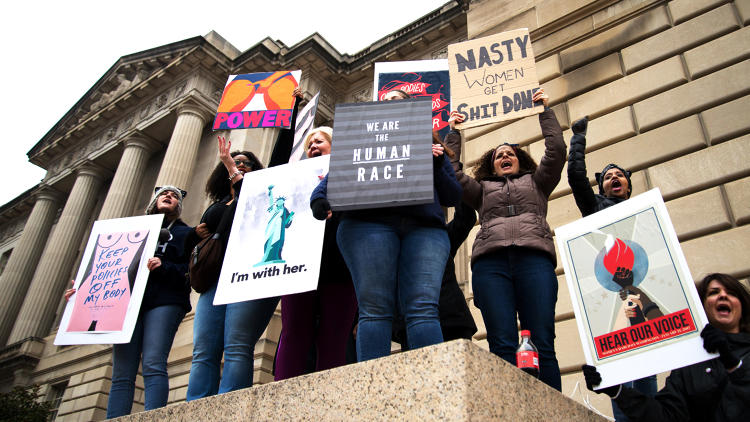
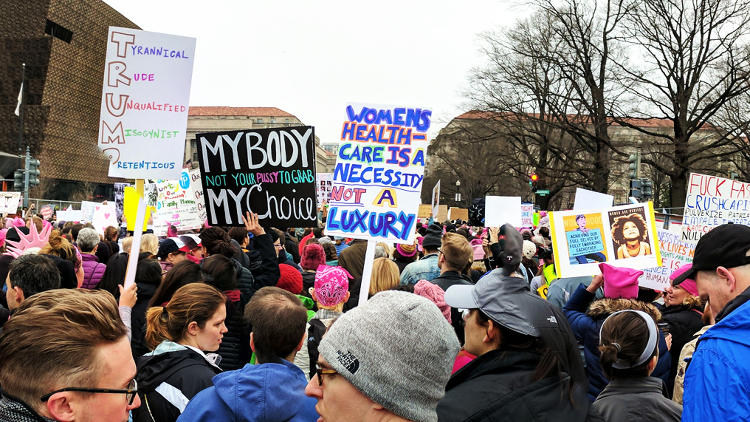
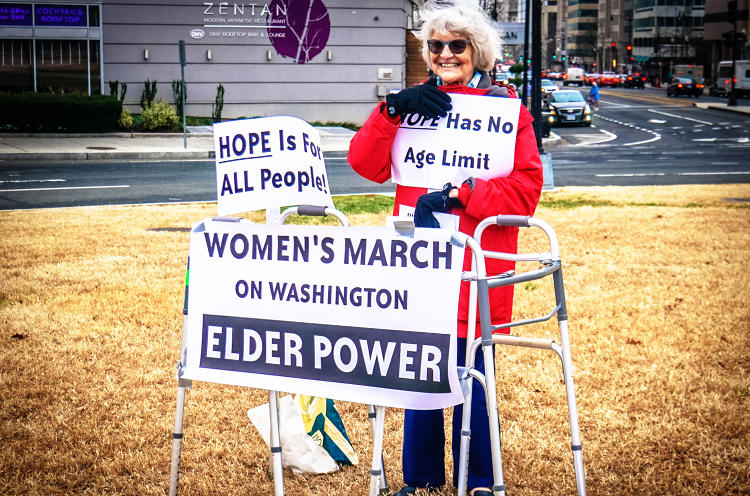
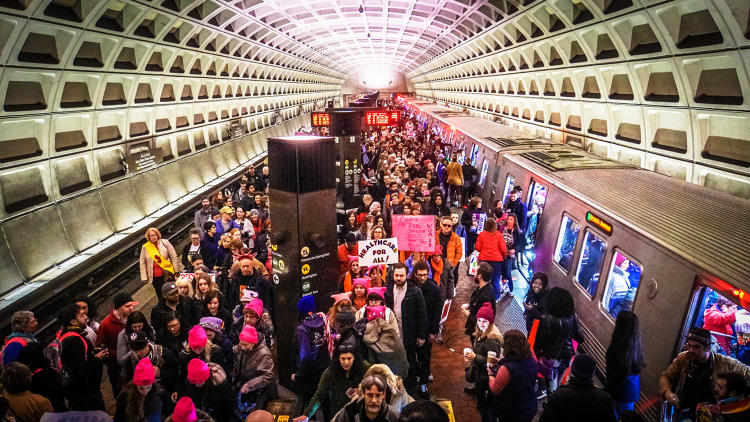
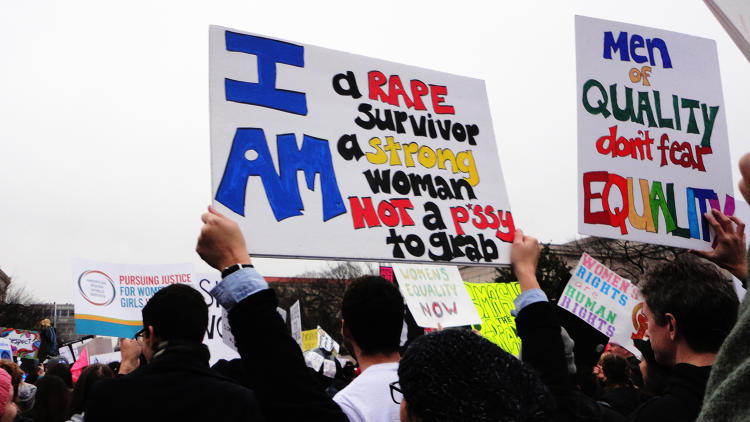
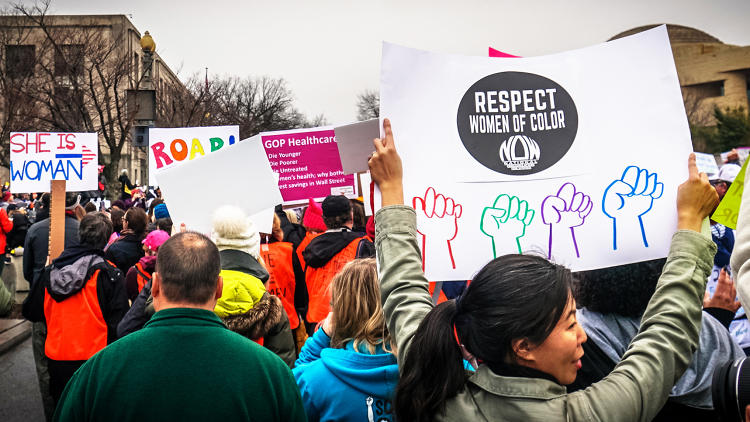
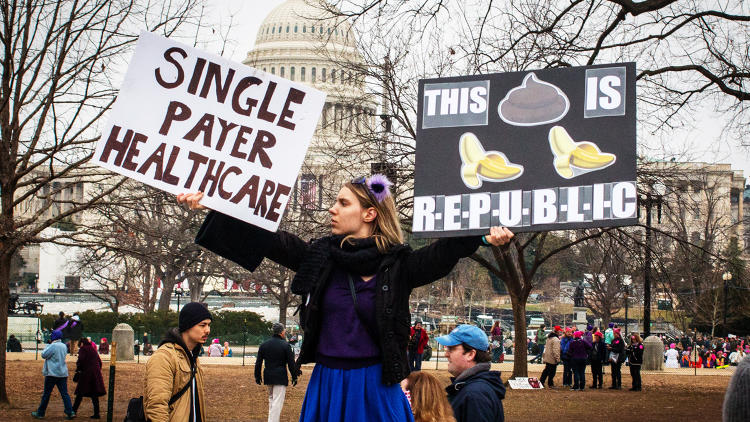

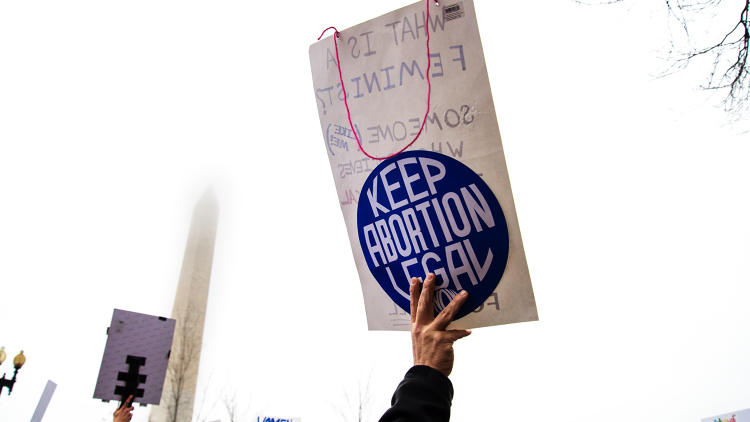
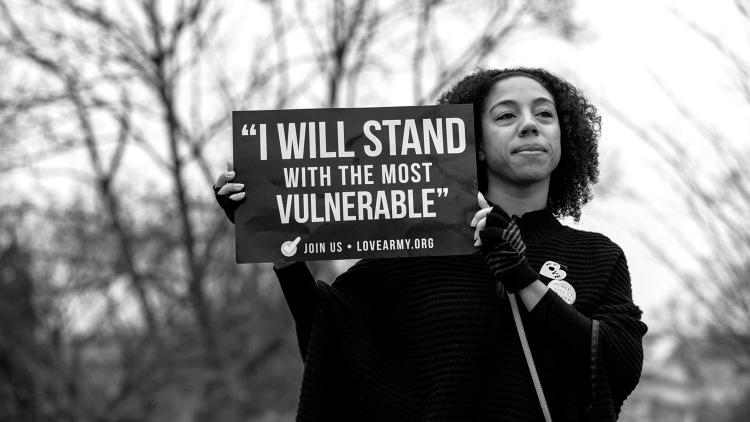
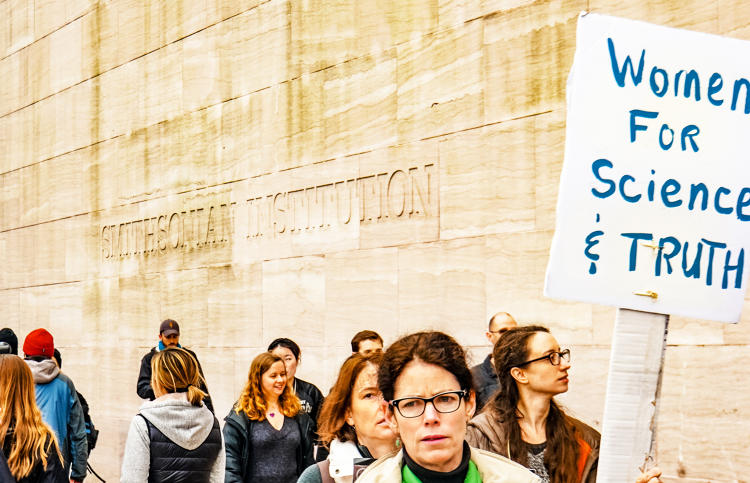
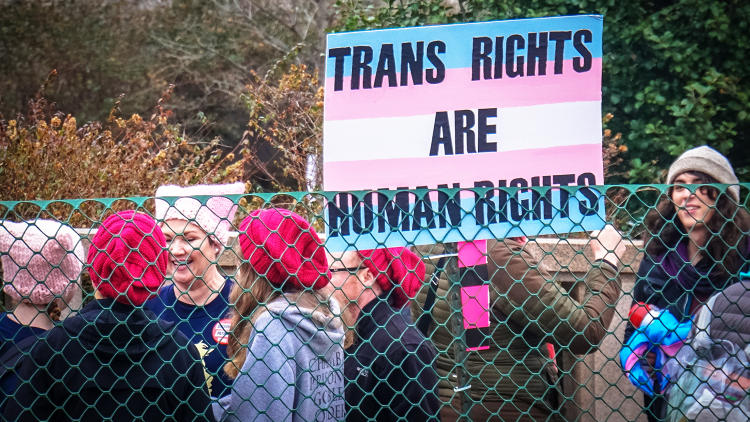
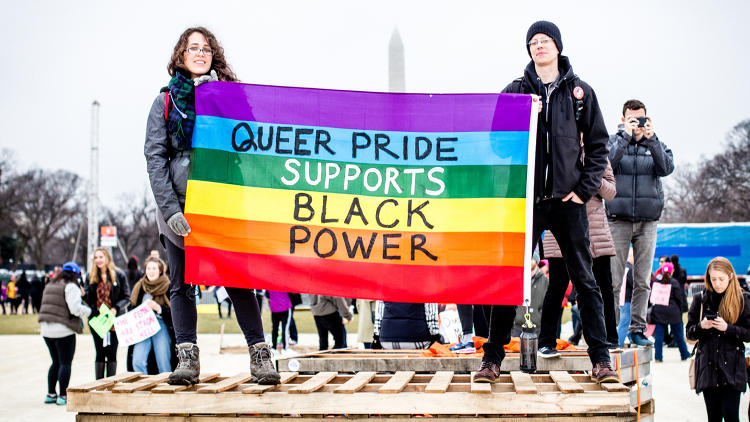
Fast Company , Read Full Story
(74)